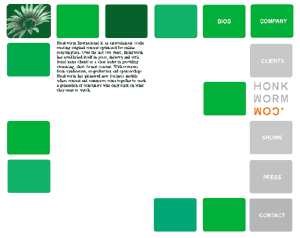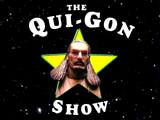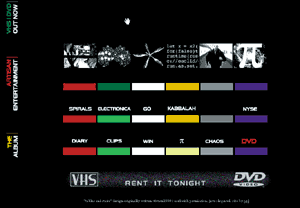NOTHING BUT NET
Marco Masoni considers the impact of the Internet on the future of filmmaking.
From www.pithemovie.com
Keep action and detail to a minimum. Avoid hand-held camera work in favor of a tripod. Avoid subtleties and wide angles. Reduce unnecessary noise and keep the audio simple, the tracks few. Light with compression in mind. Use as high-quality a camera as possible. And while you’re at it, beg, borrow, or "preview" thousands of dollars worth of software.
Is this any way to shoot a film? Perhaps not. But then again, we’re not talking about shooting film. We’re talking about shooting digital video for streaming on the Internet at variable speeds. Welcome to the world of media making for the Web.
"Everyone from established filmmakers to neophytes is saying, ‘I want to do something just for the Net.’ What does that mean?" asks Atomfilms.com’s founder Mika Salmi, who then opines: "It’s too soon to say that there’s a ‘web style,’ but there will be. I see entirely new content developing for this medium."
Up until now, the vast majority of the media content we’ve been seeing on the Internet – from news programs to film trailers and shorts – has been produced for television broadcast or theatrical distribution, then retooled and repurposed for web streaming. In fact, programming created specifically for the Internet may be the next growth market for enterprising independent filmmakers. Filmmakers who dream of the multiplex and 35mm will continue to mail out their scripts or put together their own production companies. But those who are able to reconceive themselves and their work for the technical, social, and artistic traits of the Web may find themselves with larger audiences, influence – and possibly, profits – than they could ever have imagined.
From Rob Nilsson's "Scheme."
And it’s coming at net speeds
Combine a global Internet user base expected to double in the next two years, reaching nearly 300 million people, with entertainment as the fastest growing category of Internet content. Throw in technological advances that make capturing video digitally, editing it on a desktop and streaming it over the Net cheaper and easier by the week. Consider the proliferation of platforms through which the Internet can be accessed, ranging from desktop computers and web-enabled televisions to cellular phones and PDAs (Personal Digital Assistants, like the Palm Pilot). And top it off with the recent launch by the two largest Internet ratings companies, Media Metrix and Nielsen Net Ratings, of streaming media surveying capabilities, allowing for the measurement of overall usage of media players (e.g., Real Player, Quicktime and Windows Media) and media downloads. A new medium is stirring.
The tendency to regard the Web solely as an alternative distribution outlet for existing features and short films – often with about as much caché as public access cable – is dissipating. This is partly due to cash-laden companies like Pop.com, emerging out of the Hollywood orbit. With a $50-million kitty, DreamWorks and Imagine Entertainment, announced the launch of Pop.com to produce and broadcast original Internet-only programming. For Pop.com this translates into one- to six-minute episodic streaming video segments emphasizing comedy, interaction, and most importantly, the carrot-on-a-stick of a development contract with DreamWorks and Imagine.
New genres for a new medium
"One of the things we have now is the notion that a movie can be a couple of inches wide by a couple of inches tall surrounded by a page full of content," says Jason Wishnow, whose site, newvenue.com is all about showcasing movies designed specifically for the Internet. Wishnow believes that the constraints which the medium places upon media-rich content can promote creativity by inspiring a new aesthetic for a new medium. Just as The Blair Witch Project exploited a look associated with home video cameras, Wishnow asserts that there can be a style unique to web films.
Or styles. As the Internet grows, it may spawn a new set of genres, each with its own auteurs. And while the Web may not have its own D.W. Griffith or Orson Welles yet – it does have Joe Cartoon.
A former T-shirt designer, Joe Cartoon (Joe Shields) found his audience on the Net, and keeps finding it all over the world, as his interactive Flash-based digital cartoons make their way into thousands of new e-mailboxes everyday. Cartoon’s popularized a form of viral e-mail marketing, and AtomFilms – the Seattle-based company which bills itself as a next-generation entertainment company – unabashedly admits that it has helped give them early brand recognition. Cartoon’s interactive animations, featuring a frog in a blender and a gerbil in a microwave, were e-mailed by AtomFilms to hundreds of people who liked what they saw so much that they e-mailed them to thousands of others, who . . . you get the point. It’s viral.
And Joe Cartoon couldn’t be happier. His own site now fields over half-a-million hits a day. Yet he remains humble. Regarding the Internet as a new medium, he speaks of its levelling effect: "People are just doing what they want and drawing their own audience. A whole bunch of people are throwing their voices onto the Net; they’re not catering to an audience, they’re catering to themselves. And what the audience finds refreshing is that the vision belongs to a person, not a corporation."
As for his media-making process, Cartoon had never animated anything until he decided to take some of the T-shirt designs he couldn’t sell and figured out a way to bring them to life on a computer using Macromedia’s Flash animation software. "When I first discovered Macromedia Flash," he says, "I was able to go from flat cartoons to delivering a story with a punchline, and it was a perfect way for me to express myself. It fit my brain wave-length."
The viral thing took him by surprise. The fact is, Flash travels well on the Web. The files are relatively small. They take up little space in the way of storage or bandwidth. And the resulting quality is, for the time being, far superior to most live-action video streamed over the Net. It’s no wonder that "South Park" creators Trey Parker and Matt Stone are also getting in on the action, signing a deal with Shockwave.com to use Macromedia Flash technology to produce web-based animated shorts between two- and five-minutes in length. The Web’s viral potential should be a wet dream for the "South Park" duo given that their own careers were launched when a five-minute animated Christmas card they created for a Hollywood exec got copied on VHS and virally passed around the world. The cross-media opportunities appear to be viral as well. Both Joe Cartoon and the "South Park" producers have already negotiated all kinds of spin-off deals to license their work for use in other media – ranging from games and toys to, of course, T-shirts.
Turning cartoons into commercial content is a growing trend on the Net. The quickness and subtle complexity with which it can be done is unprecedented, and it’s impacting web-centric content creation.
Infotainment
The formula. Take a service people use frequently on the Web, like one that provides stock market quotes and company information. Develop a way to present that information in a manner that is entertaining, preferably with the use of Flash animation, which is quick and cheap to work with. Add in some interaction, maybe even a lot – the kind that holds people’s attention and keeps them coming back for more. Make sure it’s not repetitive, that it has the potential to change every time. Now, think about how that entertaining service can be personalized, so that everyone experiences it differently and even has the possibility of self-customizing some of those differences. Finally, brainstorm for related products and services and sponsored messages that might be tied into this entertaining stock information system. But call it something quirky, like . . . "StockMarket Psychic."
That’s not quite how Pixelwave created "StockMarket Psychic," but according to Dean Terry, senior vice president of creative development, it reflects the kind of process the company uses for similar "character and data-driven interactive entertainment productions for the Internet." The process was developed through a combination of serendipity and savvy tweaking when Pixelwave created a web site for a fake company called SmellFunny Software. They had an episodic animation called "The Virtual SuckUp Show" on their site, for which they produced fake advertisements, including one called the "StockMarket Psychic". The animated character of the Psychic was so appealing that they decided to turn it into a product – which meant incorporating interactive features that could provide value-added services, like real-time stock quotes and business reports. The results were impressive enough to get AtomFilms to acquire Pixelwave as part of its own process of creating Atom Studio and satisfying what Mika Salmi sees as an "overwhelming demand to create online animated content for both consumers and businesses." Already, Pixelwave’s Dean Terry is talking like an AtomFilms veteran, saying: "One of the things Atom Studio is going to be doing is working with filmmakers creating works actually intended to be on the Web."
 |
His main criteria when testing a new concept for a series is to see whether it immediately triggers ideas for more episodes. He gives the example of Honkworm’s "London Calling," about a queen who is so bored she starts making crank calls from her castle. (Can you think of an episode?) Liedgren also notes how much of what works on the Internet is really intense and over-the-edge. People are looking for things on the Web that they don’t find elsewhere. "I am almost religious in my belief that online content, or entertainment, has to be very different from what we see on TV. When people watch entertainment on the Web, they’re not going to watch an hour of it. It’s almost like a virtual coffee break."
Storytelling, bit by bit
 |
| From "Letters from Homeroom." Photo: Erika Latta |
Nora Barry, creator of thebitscreen.com, which premiered the first episodes of "Letters From Homeroom," and which focuses exclusively on first-run Internet films and web series, jump-started her site by approaching a variety of people – ranging from script writers to fine arts animators and video artists – asking them to create works for the Web. The results were often raw and original. "To me, the medium most closely resembles oral storytelling. It’s not locked in, and it can be ongoing. There are no boundaries. No predefined forms or structures. It’s a whole new way of telling a story."
Barry gives an example of what she calls the pass-along story format. The episodic "Scums," a series about small-time hustlers, was created by Marco and Antonio Manetti. The Manetti brothers created the first four episodes of "Scums," then turned over the fifth to another filmmaker who had seen it on the Web; the Manettis picked up where that filmmaker left off for episodes six and seven, only to turn it over to yet a different filmmaker for episodes eight and nine, then picking it up again for episode ten. Confused? Barry goes on to speak of formats that use the computer to randomly configure sounds and images into three-minute pieces, and also of vignettes – watchable in any order – consisting of different backgrounds with a central theme. Sound experimental? Won’t appeal to mainstream audiences? Barry disagrees. "What surprised me is that indie film is often seen as something that doesn’t play in Peoria. I think people’s tolerance for experimental and interactive material is greater on the Web. I don’t know why, but the computer [elicits] a different expectation level than seeing a film in a theater or watching a show on television."
Similarly, Wirebreak.com is committed to developing programs that give people a say in what they’re watching, so that they can do things like view a 10-minute show in two-minute segments or even influence the course that a story takes. "Our whole goal, says Sal LoCurto, senior vice president of marketing and programming for Wirebreak Entertain-ment, "is to make the Internet a two-way, three-way, four-way medium. We design everything keeping in mind how people use the computer." If this sounds an awful lot like some failed experiments undertaken years ago in movie theaters, the difference is the medium and its delivery mechanism. The Internet makes interactivity a much more dynamic and personal experience, and the devices used to deliver interactive shows, like those broadcast by Wirebreak.com, are inherently interactive – there’s no forced fit. For now, those devices are computers, but soon they will also be cellular phones and PDAs.
You must be joking
One thing that people are eagerly looking for on the Web these days is parodies, particularly parodies of commercial successes like The Blair Witch Project, Saving Private Ryan and The Phantom Menace.
"The Web provides a medium where you can do copyright infringement and no one flips out about it," claims Mark Nelson of inetfilm.com. With a song from Madonna, Star Wars action figures, and a naked Barbie doll, just for starters, Evan Mather’s Star Wars: Episode I-spoof, "Les Pantless Menace," up and streaming on his www.jedinet.com site, goes for broke on copyright infringement. And he seems unconcerned about it.
The making of parodies was turned into an event in itself when AtomFilms and D.FILM, an itinerant digital film festival (www.dfilm.com), sponsored a Star Wars parody contest called "Makin’ Wookie." After reviewing over 300 short scripts with the help of Star Wars hero Billy Dee Williams, one was chosen to be made into a web film. Written by Robert Fyvolent, an entertainment attorney working for Sony Pictures, the winning script, titled "Episode 1: The Qui-Gon Show," involved placing Jedi Knight Qui-Gon in various situations that evoked The Truman Show and The Matrix. New Venue’s Jason Wishnow and jedinet.com’s Evan Mather were tapped to lead the effort of turning the script into a film. The former working out of New York, and the latter out of Seattle, together coordinated a team of 10 animators who labored on the project over the course of one month. Using Apple’s Final Cut Pro Software to edit the film and combining it with QuickTime 4 streaming and Flash animation technology, Wishnow and Mather broke down geographical barriers and succeeded in collaborating without ever actually meeting.
 |
Parody and satire mix in John Polizzi’s oddly compelling short web film, "Video: War: Leverage," to be found on The New Venue site as well as John Polizzi’s www.number32.com. Polizzi combed the Internet for images, sound, text and ideas, then mixed and matched what he found to yield something that resonates as much as it distorts. Combining images retrieved from the night vision footage of smart bombs, a written synopsis and ratings of Kubrick’s Dr. Strangelove, Or How I Learned To Stop Worrying And Love The Bomb, and an audio track excerpted from a webcast of a shareholders’ meeting regarding the acquisition of Broadcast.com by Yahoo!, he created what he calls a "digital artifact." Tongue in cheek, Polizzi describes "Video: War: Leverage" as the byproduct of a computer virus that infected his server, manipulating and obfuscating the data which he was attempting to retrieve from the Web. In effect, Polizzi is reminding us that the Internet is all about data, the organization of data, the absorption of data, and a reliance upon data. And data can get distorted, sometimes at will, sometimes by accident, or sometimes so subtly that it doesn’t come across as distorted at all. Beyond the Internet, however, "Video: War: Leverage" is a reminder of the power of information and information manipulation.
Everything must converge
Media content for the Net is highly dependent on technology and impacted by its limitations and potential. "The narrative won’t be displaced by technology – just the opposite I hope," says David Coleman, whose Bijoucafe.com is an example of a web site that functions like an art house on the Internet. Coleman is eagerly promoting the development of an original made-for-the-Web series that his site is distributing called "Since Noon Yesterday," based on Michael Avallone’s long running Ed Noon series of detective novels and written/ directed by his son, David Avallone. The trailer for this series is particularly well-adapted to the Net, as it was shot with many of its lessons in mind: it uses digital video, the action is kept minimal, with plenty of close-ups, the audio track is clear, and the tone is quirky and mysterious. But Coleman stresses that the low-tech look of "Since Noon Yesterday" will be integrated with a number of interactive elements, including Pokémon-type playing cards for each character that contain textual information, images and sound bytes. The show will, in other words, reflect both the limitations and potential of current web technology.
Interactivity will, perhaps, become the hallmark of web filmmaking. Whether it means, for example, soliciting instant feedback from other filmmakers and audience members before, during and/or after the production process, or finding ways to make the entertainment experience less passive, interaction is likely to become the chief characteristic of web filmmaking. There will be a new generation of multimedia-versed filmmakers who refine, and even learn, their craft on computers and on the Net, applying their skills in ways both online and offline to realize projects that are dynamic in their very nature. Nora Barry sees them coming on her own site: "Students write in from all over that they want to learn to create for the Web and are using thebitscreen.com as a research pool."
Internet filmmaking in the future
Imagine a student who spends much of her time surfing media web sites, as well as watching and playing interactive game shows. Let’s call her Michiko. She has begun making her own web films using her father’s old digital camcorder, playing around with the footage on a digital video editing system and putting the results up on a personal web site for the world to see. In a short time, Michiko has also become acquainted with fellow digital video enthusiasts and game players through her web site and some of her favorite Internet message boards and chat rooms.
Michiko learns how to refine her skills through the advice and information that she gleans from the Web and applies it in her Internet film projects. She finds ways to download and incorporate all kinds of images, graphics and sounds found on the Net, playing around with them using graphics programs. She builds a database for her media and makes it searchable online by words, ideas and colors. She invites others to collaborate with her, mailing video clips back and forth, or working simultaneously, remotely sharing the computer screens of her collaborators. To overcome the barriers of language, she employs an instant translation application that turns all of her dialogue into subtitles or spoken words in one of dozens of languages. It doesn’t take much for Michiko to track her viewers either, learning about their profiles and preferences. What videos do they prefer to watch? How long do they watch them? Do they watch them from work or at home, and at what times of the day? In time, Michiko decides to produce videos that reflect the themes that interest her audience, offering them by mail on a subscription system ("You’ve Got Michiko’s Video Mail!") or on her web site through a jukebox-style, micropay-per-view basis.
Michiko starts to create "spec web films" that contain generic products placed throughout the movie. She then persuades companies to buy a spot – real estate in her film – and digitally replaces the generic products with the products of her sponsor companies. In return, Michiko gets financing for the post-production and distribution of the film, exposure on the companies’ web sites, and eventually funds for a larger project.
As for her crew, many are people she has met on the Net – musicians, editors, production assistants, cinematographers, etc., from all over the world. Together, they work to produce films for the web that inform, advertise and entertain, literally as they are being made.
The marriage of the Web with filmmaking creates an infinite number of creative possibilities, expanding the universe of the imagination. The Net, as a digital medium, does not kill video, film or television, any more than video killed the radio star. But the Net is not just another medium either, since it stands to subsume all media – from film to photography, letters to books, and words to music. And future filmmakers who work on the Net are more likely to be called mediamakers.
Maco Masoni is a New York-based entertainment attorney and the co-founder of the digital online resource dScoop.com.
VOD CALENDAR


 See the VOD Calendar →
See the VOD Calendar →




